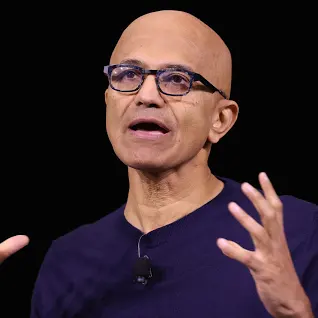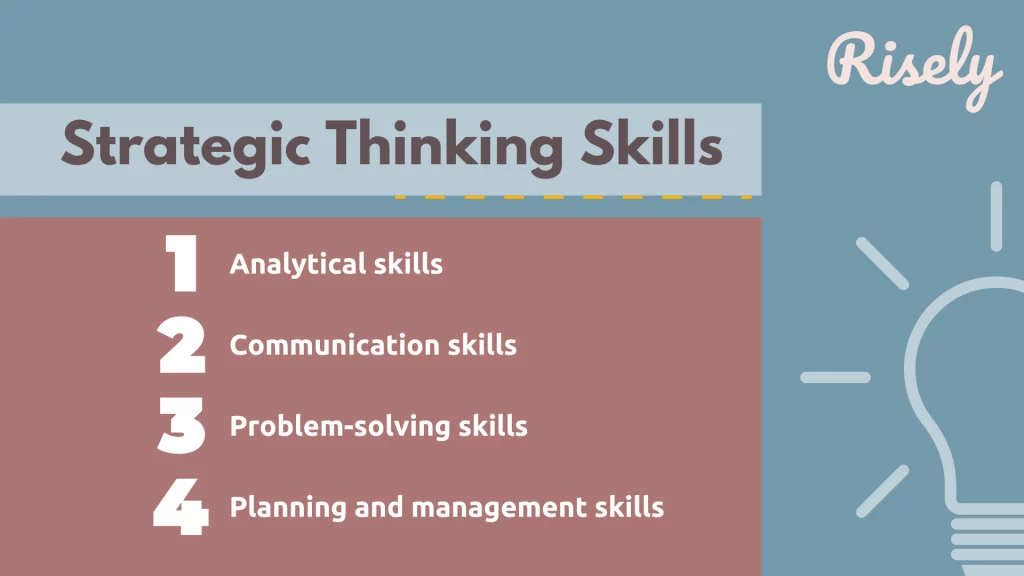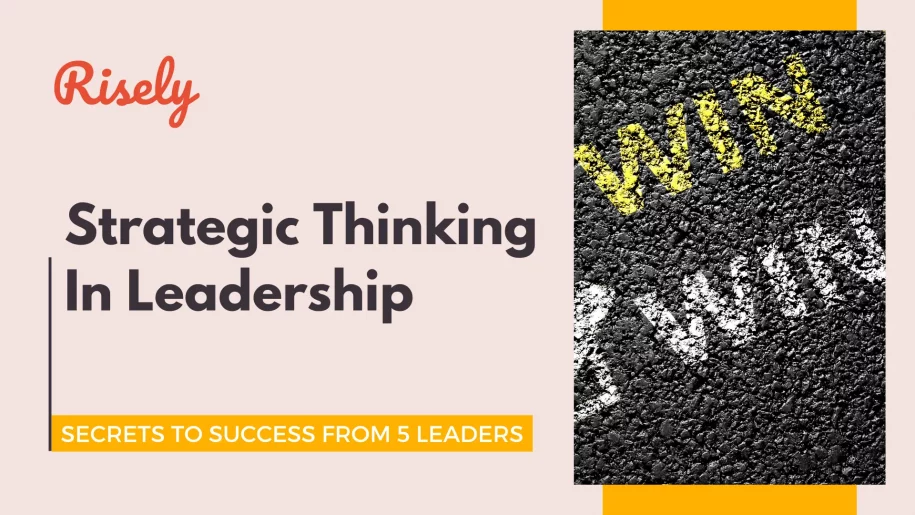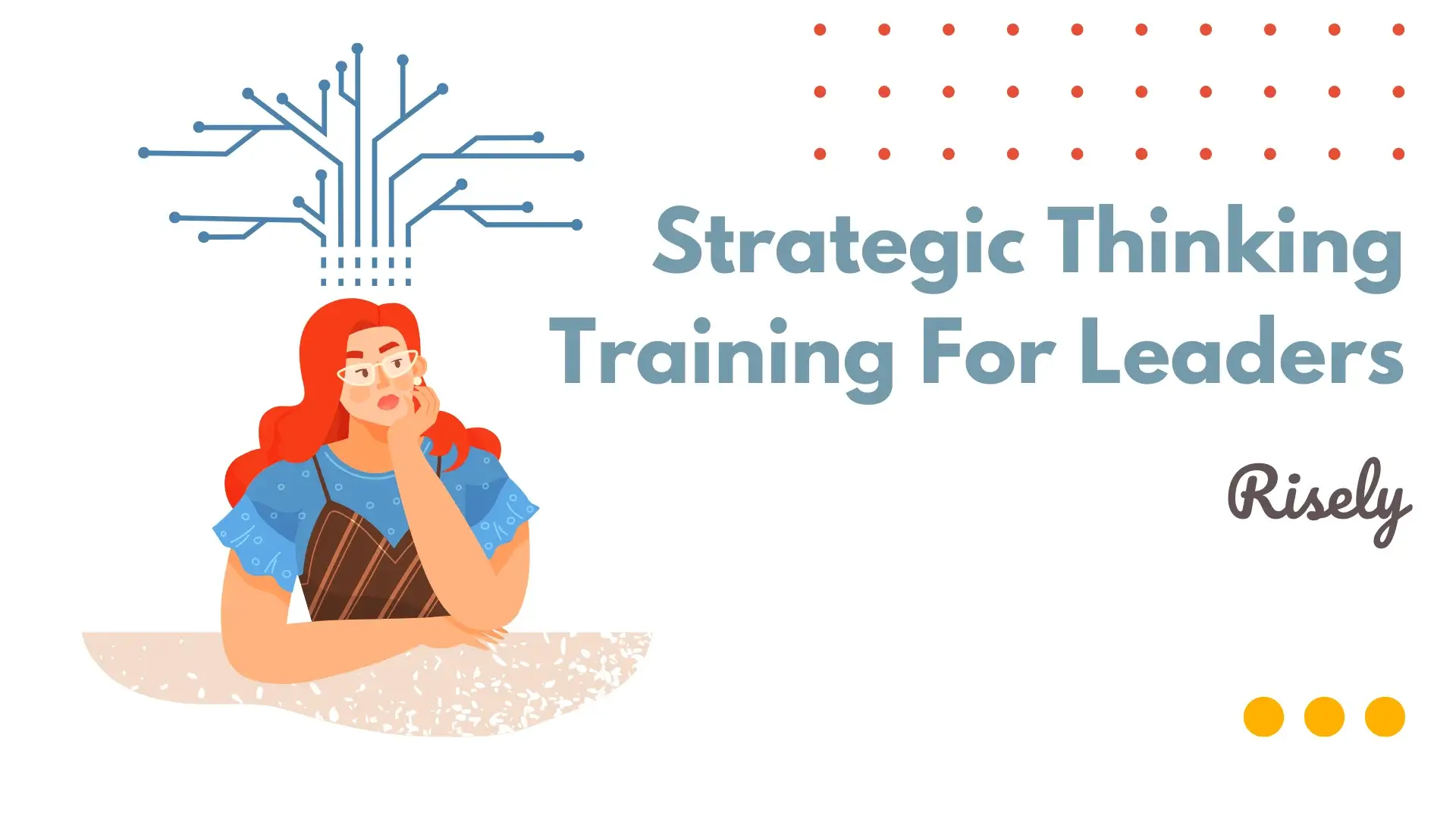Strategic Thinking In Leadership: Secrets To Success From 5 Leaders
Leadership is more than just managing people and resources. It’s about having a vision for the future and developing a plan to achieve it. That’s where strategic thinking comes in. Strategic thinking is the ability to see the big picture, understand how different parts of a team or project fit together and make decisions that move toward a long-term goal. In this blog, we will explore the importance of strategic thinking in leadership, the key skills required to be an effective strategic leader, and the habits that successful strategic leaders cultivate to drive innovation and achieve long-term success. If you are a new leader seeking to develop your strategic thinking skills and refine your approach, this blog will provide valuable insights to help you lead your team to success.- Strategic Thinking In Leadership: Secrets To Success From 5 Leaders
- What is strategic thinking in leadership?
- Why is strategic thinking in leadership important ?
- What are the different strategic thinking skills?
- How to think strategically as a leader?
- How can managers improve their strategic thinking skills?
- What skills do leaders with solid strategic thinking demonstrate?
- Activities to Boost Strategic Thinking as a Leader
- Conclusion
- Frequently asked question
- Other Related Blogs
What is Strategic Thinking in Leadership?
Strategic thinking in leadership is the ability to analyze and understand the big picture of a team or project, anticipate potential challenges and opportunities, and make informed decisions that align with long-term goals. It involves considering the short and long-term implications of decisions, prioritizing tasks and projects, and quickly adapting to market or industry changes. Leaders who think strategically can effectively communicate their vision and goals to their team and make data-driven decisions that drive the team’s success. It’s important to note that this skill involves both analytical and creative thinking. Leaders who think strategically must be able to gather and analyze data, identify trends and patterns, and use that information to make informed decisions. However, they must also be able to think creatively, consider different perspectives and approaches to problems, and develop innovative solutions that move the team forward. Another critical aspect of strategic thinking in leadership is the ability to anticipate change and plan for the future. This involves developing contingency plans to address potential challenges and taking advantage of emerging opportunities.Satya Nadella
Mary Barra
Jeff Bezos
Steve Jobs
Indra Nooyi

Satya Nadella (CEO of Microsoft)
Under Nadella’s leadership, Microsoft shifted its focus towards cloud computing. Nadella recognized the growing importance of cloud services and led the company’s efforts to become a major player in the cloud industry. Microsoft’s Azure platform, developed during Nadella’s tenure, has become a key contributor to the company’s revenue and growth.

Mary Barra (Chair and CEO of General Motors)
Mary Barra has strategically positioned General Motors for the future by emphasizing electric and autonomous vehicles. She announced plans for General Motors to go all-electric by 2035, recognizing the shift in consumer preferences and the industry’s move towards sustainable transportation.

Jeff Bezos (Founder and Former CEO of Amazon)
Jeff Bezos strategically diversified Amazon’s business beyond e-commerce. Recognizing the potential of cloud computing, Amazon Web Services (AWS) was launched, providing a new revenue stream and becoming a leader in the cloud services industry.

Steve Jobs (Co-founder of Apple Inc.)
Jobs strategically emphasized design and user experience in Apple products. This focus differentiated Apple from competitors and created a strong brand identity. The intuitive design and aesthetic appeal of products like the Mac, iPod, iPhone, and iPad contributed to Apple’s success.

Indra Nooyi (Former CEO of PepsiCo)
Nooyi strategically led PepsiCo through a shift in product focus by promoting healthier food and beverage options. This strategic decision aligned with changing consumer preferences and contributed to the development and marketing of products like Baked Lay’s and Tropicana juices.
Why is Strategic Thinking in Leadership Important ?
Strategic thinking in leadership is critical because it helps them navigate the challenges of their role and drive their team’s success. When starting a new leadership role, it can be easy to get caught up in the day-to-day tasks and lose sight of the bigger picture. However, by taking a strategic approach, new leaders can establish a clear direction for their team and ensure everyone is working towards the same goals. One of the key benefits of strategic thinking for new leaders is that it provides a roadmap for success. As a result, leaders can prioritize tasks and allocate resources effectively by setting long-term goals and identifying the steps necessary to achieve them. Another benefit of strategic thinking is that it enables new leaders to anticipate and plan for change. The industry constantly evolves, and new leaders must adapt to new challenges and opportunities. By thinking strategically, leaders can identify potential risks and opportunities and develop contingency plans to address them. Finally, strategic thinking in leadership is essential for effective communication. New leaders must be able to communicate their vision and goals to their team and stakeholders in a clear, concise, and compelling way. By thinking strategically, leaders can identify the key messages they must convey and tailor their communication style to suit different stakeholders.Other Interesting Reads
What are the Different Strategic Thinking Skills?
Strategic thinking skills refer to analyzing complex situations, identifying opportunities and challenges, and developing effective strategies to achieve specific goals. It involves thinking critically and creatively, considering multiple perspectives, and making decisions. They are essential because managers can make or break company growth. Strategic thinking in leadership requires a combination of skills mentioned below:
- Analytical skills: Strategic thinking requires gathering and analyzing data, identifying patterns and trends, and using that information to make decisions. Leaders who think strategically must be able to interpret complex data sets and draw meaningful insights from them.
- Communication skills: Effective communication is essential for strategic thinking. Leaders who think strategically must communicate their vision and goals to their team and stakeholders clearly, concisely, and compellingly. They must also be able to listen actively and provide feedback to their team.
- Problem-solving skills: Strategic thinking requires the ability to identify and solve problems. Leaders who think strategically must be able to approach problems from multiple angles and develop creative solutions that address the root causes of the issue.
- Planning and management skills: Strategic thinking involves setting long-term goals and identifying the necessary steps. Leaders who think strategically must be able to develop and implement strategic plans, allocate resources effectively, and manage risks and opportunities.
How to Think Strategically as a Leader?
Strategic thinking in leadership does not come naturally to everyone, but it’s a skill that can be developed with practice. Here are some tips for how you can improve your strategic thinking skills:- Gather information: To think strategically, leaders need to have a deep understanding of their team, its mission, values, and objectives. Managers must also stay up to date with the latest industry trends, market changes, and emerging technologies.
- Analyze data: Use data to make informed decisions. Analyze trends, identify patterns, and use data to predict future outcomes.
- Think creatively: Be bold and think outside the box. Consider different perspectives and approaches to problems and challenges.
- Develop a plan: Once you’ve gathered information and analyzed data, develop a plan that aligns with your team’s goals and values.
- Evaluate your progress: Regularly review your progress towards your goals and adjust your plan as necessary. Celebrate successes and learn from failures.
How can Managers Improve their Strategic Thinking Skills?
Ask strategic questions
Asking the right questions is key to strategic thinking. By asking open-ended questions that challenge assumptions and uncover new insights, you can better understand the problem or opportunity. Strategic questions can help you identify root causes, consider multiple perspectives, and develop creative solutions.Observe and reflect
Observing and reflecting on your environment can help you develop your strategic thinking skills. By analyzing trends and patterns in your industry or marketplace, you can identify opportunities for growth and potential risks. Reflection allows you to think deeply about your experiences and learn from them, enabling you to make more informed decisions.Consider different and opposing viewpoints
Strategic thinking in leadership involves considering multiple perspectives and ideas. Leaders can challenge their assumptions and expand their thinking by actively seeking opposing views. This can help you develop more robust strategies and make more informed decisions.Adopt formal training
Formal training in strategic thinking can help you develop your skills and gain new insights. Many courses, workshops, and books can teach you the principles and techniques of strategic thinking. This can help you stay up-to-date with the latest trends and best practices and develop your skills in a structured and systematic way.Collaborate with others
Collaboration can help leaders develop their strategic thinking skills by exposing them to new ideas and perspectives. By working with people from diverse backgrounds and experiences, they can gain fresh insights into their challenges and develop more innovative solutions. Seek role models: Learning from others skilled in strategic thinking can be a valuable way to develop your skills. Seek mentors and role models who can offer guidance, advice, and feedback, and observe how they approach strategic challenges. This can help you develop your strategic thinking skills and build a network of support and guidance as you navigate your leadership role.What skills do leaders with solid strategic thinking demonstrate?
- Strategic agility: Leaders with strong strategic thinking skills can quickly adapt to changing circumstances and respond to new challenges. They can anticipate potential roadblocks and opportunities and adjust their strategies accordingly.
- Flexibility when dealing with a paradox: Effective strategic thinkers can hold seemingly opposing ideas in their minds simultaneously and find creative solutions to resolve them. They can embrace complexity and ambiguity and use them to their advantage.
- Clarity amid ambiguity: Leaders with strong strategic thinking skills can cut through ambiguity and make sense of complex information. They can identify the key drivers of change and distill them into clear and concise goals and strategies.
- The perspective of the bigger team picture: Strategic thinkers can see the big picture and understand how their decisions and actions impact the team. They can align their strategies with the overall mission and vision of the team and work collaboratively with others to achieve shared goals.
Activities to Boost Strategic Thinking as a Leader
- Continuous learning: Strategic leaders are committed to constant learning and self-improvement. They seek new information, ideas, and perspectives and apply them to their work. They also prioritize ongoing professional development and seek opportunities to expand their skills and knowledge.
- Focus on the long-term: Strategic leaders can balance short-term goals with long-term vision. They prioritize initiatives that align with the team’s strategic direction and can stay focused, even in the face of short-term challenges.
- Collaborative mindset: Strategic leaders understand the value of collaboration and actively seek opportunities to work with others. They build strong teams and partnerships and can leverage diverse perspectives to drive innovation and achieve shared goals.
- Embrace innovation: Strategic leaders are open to new ideas and approaches and are willing to take calculated risks to achieve breakthrough results. They encourage experimentation and learning and can pivot quickly in response to changing market conditions or customer needs.
- Lead with purpose: Strategic leaders are guided by a clear purpose and mission. They can articulate a compelling vision for the future and inspire others to join them in achieving it. They also prioritize ethical behavior and act with integrity in all their interactions.
Conclusion
Strategic thinking in leadership is critical in today’s fast-paced environment. Effective strategic leaders possess various analytical, communication, problem-solving, planning, and management skills. They can ask strategic questions, observe and reflect, consider opposing ideas, and embrace formal training to improve their strategic thinking abilities. They also cultivate habits such as continuous learning, a focus on the long term, a collaborative mindset, and an embrace of innovation. By developing these skills and habits, strategic leaders can lead their teams through uncertainty and change and drive long-term success. Whether you are a new leader seeking to develop your strategic thinking skills or an experienced one looking to refine your approach, the key is to prioritize continuous learning and self-improvement and to stay focused while remaining flexible and adaptable. You can become a successful strategic leader and help your team thrive by doing so.Strategic thinking skills are critical for leaders. Are you prepared?
Take the free strategic thinking skill assessment now for free to understand the ins-and-outs in just a few minutes.
Frequently asked question
Why do leaders need strategic thinking?
Leaders need strategic thinking because it enables them to see the big picture and anticipate future opportunities and challenges. It helps them make informed decisions aligned with the team’s vision and goals and enables them to develop and execute effective strategies that drive growth and success. Without strategic thinking, leaders may become reactive, miss opportunities, or fail to address potential threats.
What is the strategic role of leaders?
The strategic role of leaders is to provide direction, align resources, and make decisions that support the team’s long-term success. They must develop a deep understanding of the team’s internal and external environment, identify key trends and drivers, and anticipate future challenges and opportunities. They must translate this knowledge into actionable strategies and plans that drive growth, innovation, and competitive advantage.
How do leaders develop strategic thinking?
Leaders can develop strategic thinking by:
– Engaging in continuous learning and professional development to stay up-to-date with industry trends and developments.
– Seeking diverse perspectives and input from colleagues, stakeholders, and experts to better understand the team’s challenges.
– Encouraging a culture of innovation and experimentation that supports creative thinking and risk-taking.
– Setting clear goals and objectives aligned with the team’s vision and values.
– Engaging in continuous learning and professional development to stay up-to-date with industry trends and developments.
– Seeking diverse perspectives and input from colleagues, stakeholders, and experts to better understand the team’s challenges.
– Encouraging a culture of innovation and experimentation that supports creative thinking and risk-taking.
– Setting clear goals and objectives aligned with the team’s vision and values.
How can strategic thinking improve leadership?
Strategic thinking can improve leadership by enabling leaders to:
– Develop a clear vision and direction for the team.
– Identify and capitalize on opportunities for growth and innovation.
– Anticipate and mitigate potential risks and challenges.
– Develop a clear vision and direction for the team.
– Identify and capitalize on opportunities for growth and innovation.
– Anticipate and mitigate potential risks and challenges.
Other Related Blogs
Strategic Thinking Training For Leaders Simplified
Strategic Thinking Training For Leaders Simplified Strategic thinking is a vital skill for business leaders, managers, and employees in today’s fast-paced, competitive world. It goes beyond day-to-day tasks and involves…
10 Best Strategic Thinking Coaches to Speed Up Your Growth
10 Best Strategic Thinking Coaches to Speed Up Your Growth In the fast-paced and ever-evolving business landscape, strategic thinking has become more than just a desirable trait; it’s a critical…
5 Powerful Skills to Become an Exceptional Business Leadership Coach
5 Powerful Skills to Become an Exceptional Business Leadership Coach In the world of business, leadership is of paramount importance. It is something that makes all the difference. With so…
8 Strategic Thinking Examples to Help You Succeed
8 Strategic Thinking Examples to Help You Succeed Strategic thinking is an essential skill that leaders and managers must possess to steer their teams toward success. It involves analyzing situations,…


